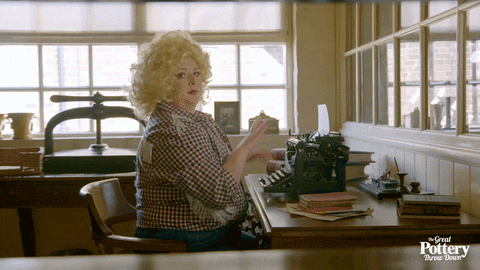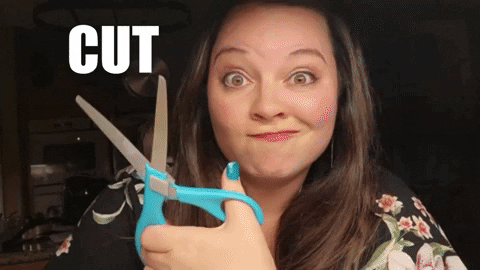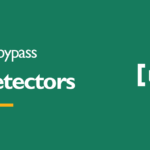You’ve just published your work after a writing sprint only to spot an embarrassing mistake in it.
Then, one mistake turns into two, two becomes three, and three becomes a crap show.
Take solace! Every writer has felt this gut punch at least once in their career.
But you can spot some of these gaffes before publishing. And it all comes down to knowing how to proofread professionally.
I have gathered a proofreading checklist containing tips from the best writers, as well as some personal preferences.
Let’s check out the best content proofreading tips to help you avoid embarrassing errors.
Pause at every punctuation

This is one of the proofreading tips and tricks that sounds straightforward because you are meant to pause at every punctuation mark.
But think about it; you probably proofread your work in one breath, especially when you are trying to meet a deadline.
Since you are familiar with the work, your brain fills in the blanks automatically as your eyes race across the page.
But by taking a breath at every punctuation, you can check the flow between sentences and clauses.
This technique helps you identify common spelling mistakes like “your” and “you’re” in your content.
Pay attention to transitions
Another reason why you should pause at every punctuation is to check the transition between ideas and paragraphs.
When proofreading, always pay attention to the first word of every sentence. This helps you gauge the flow and connection with the preceding paragraph.
If your writing doesn’t have enough transitions, proofreading will help you spot (and fix) the start-stop flow.
And most importantly, don’t just use transitions for the sake of it. Choose the relevant transitional words and phrases to link your ideas.
Let the writing simmer
Most of us are guilty of proofreading the text immediately after writing because it brings a sense of accomplishment. Or maybe, you just have a short deadline to complete the writing task.
If you have an imminent deadline, step away from the desk for a few minutes. Get some fluids and return to proofread the content.
Otherwise, just leave the task in the draft folder and get to it later.
This is one of the professional proofreading tips that every writer must add to their arsenal.
By letting the writing simmer, you can detach yourself from the writing — which will help you spot mistakes faster during the proofreading process.
Cut the fluff

Proofreading is not just about fixing errors and content structure. You also need to remove wordiness.
Going through the final draft shows you ‘unnecessary’ words in your writing.
I call them ‘fluff’ because they make the sentence longer without adding any value.
Fluff example: I strongly believe that adverbs are absolutely essential to anything that is, by definition, writing.
Alternative example: I believe that adverbs are essential to writing.
Notice how I got rid of the adverbs but the message remains the same?
So, don’t be afraid to get rid of those filler words because they make you sound unsure.
Read the text aloud
Reading out the final copy helps you understand how the text sounds to someone else, especially when you want to remove run-on sentences.
Just take a few minutes, find a silent room, and read the text to yourself.
Alternatively, you can find a partner to read the text to you and give their feedback.
Stephen King gives his manuscripts to Tabby (his wife) to proofread before finalizing them.
Caveat: Reading aloud might be a challenge if you are in a coffee shop or library.
Proofread backwards
Backwards? Huh?
Yes, you read that right!
Proofreading backwards is an excellent technique to spot mistakes instantly.
When you have an imminent deadline, this proofreading technique will help you submit the work on time.
Besides, proofreading from the bottom to the top helps you pay attention to every word — which is effective since it counteracts the brain’s capacity to autocomplete sentences.
Example: You niss half of the shorts you don’t take.
This cliche is so common that your brain can complete the sentence by recognizing a few familiar word arrangements.
But by reading backwards, you can easily spot two misspelled words in the example above.
Double-check names and proper nouns
Checking the spelling of names and proper nouns should be on your proofreading to-do list. Getting an individual’s or company’s name wrong is a cardinal sin that tarnishes your credibility.
Names like “Google” and “Larry Page” are easy to spell, but others like “George Stephanopoulos” can pose a more significant challenge.
If you are not sure how to spell a name, a quick Google search can save you a lifetime of embarrassment.
Similarly, you should also verify the dates, social media handles, product names, titles, and other information you provide in the text.
Most importantly, check the links to ensure that they lead to an accurate source of information.
Spot repeated ideas
How many “you’ve already said that!” moments do you think a reader can endure?
On average, repeating yourself more than two times is enough to annoy people.
When it comes to writing, repeated information is frowned upon because it is just a waste of people’s time.
So, proofread your work to get rid of repetitions and redundancies.
Fine-tune the structure
When you proofread a task, you also need to adjust the structure where necessary. After all, you want your words to make maximum impact.
So, if the placement of a sentence feels awkward, consider restructuring it.
As a rule of thumb, I always rewrite any paragraph that isn’t clear on the first read. If you struggle to understand what you wrote, your readers will get a headache reading it.
Not only that, getting rid of words when editing your text can change the entire flow.
To fix these inconsistencies, you need to proofread with the intent to fine-tune the structure rather than just correct errors.
Use proofreading tools
Writing experts prefer manual proofreading because they don’t trust grammar checkers.
Of course, Grammarly suggestions can frustrate the heck out of you. But you need the AI to do the heavy lifting when proofreading your content.
Here are some AI tools to complement the editing and proofreading tips and supercharge your writing.
- Grammarly — spots common spelling mistakes, bad punctuation, passive voice usage, and other gaffes.
- Hemingway App — improves content readability by highlighting hard-to-read sentences.
Other writing tools also offer proofreading services. So, choose the one that meets your budget and expectations.
You can also improve at spotting writing mistakes by conducting proofreading exercises in your free time.
Final words
Proofreading is essential to providing top-quality writing. You need to develop a strategy to fix errors and other structural inconsistencies in your writing.
And if you need external help, don’t hesitate to use Grammarly and other tools to fine-tune your writing. Use the proofreading tips and techniques in this article to take your writing to a different level!
Who wrote this?
As the owner and editor of SomebodySays, Ugo Ezenduka shows readers the fundamentals of content writing and blogging to help them adapt to the ever-changing landscape.
He has collaborated with several IT and publishing companies to create articles and blog posts that customers crave. When he is not in front of a screen, Ugo can be spotted somewhere with a camera or on a football pitch.





